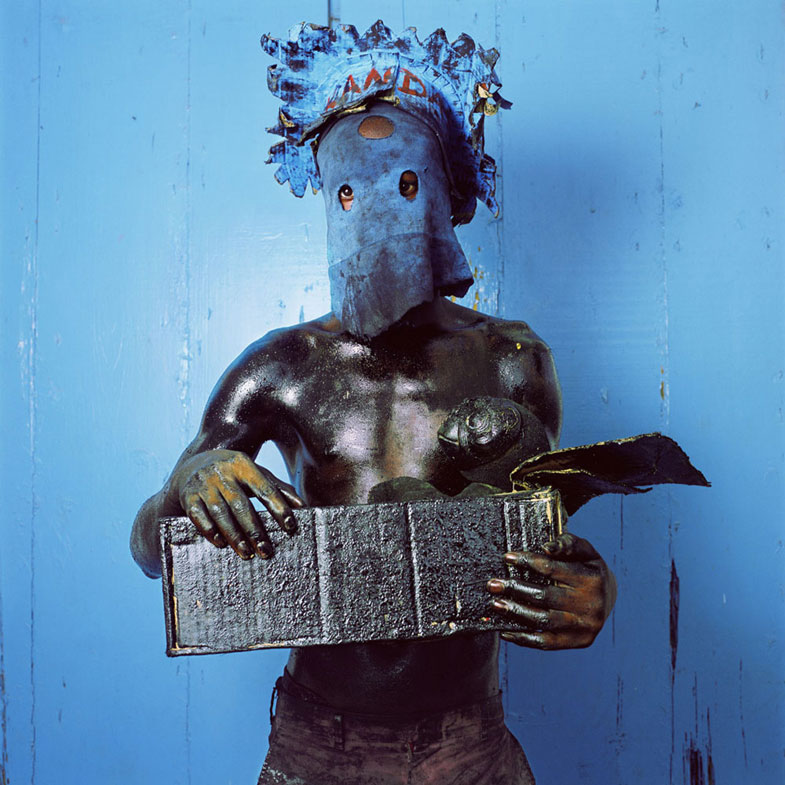
The idea of costume and ritual is something that Phyllis Galembo has been connected to for more than 25 years. She first started visiting Nigeria in 1985 and has since worked throughout west and central Africa, as well as traveling regularly to Haiti. Her portraits document the mythic characters that represent the spirit world within the rich, diverse culture of masquerade. Those photographs, which were recently published in the book Maske, include images from traditional African ceremonies, carnival and contemporary fancy dress. Her work will be on display from March 2 to April 2 at the Steven Kasher Gallery in New York.
The masquerade comes out for rituals, festivals or special events, including birthdays and funerals. However, it can also be very elusive, and the process of photographing, or even finding it, can be difficult.
“There is no directory for the masquerade,” Galembo says. “People have to want to give you access.” Some of the the subjects that she has worked to find are “original” in terms of her research and documentation. Others, like the devils in Sierra Leone, she has a encountered by going at a particular time of year knowing they’ll be around. “You spend a lot of time waiting to be able to photograph,” Galembo says. “Sometimes it can take several hours or days. The photo session itself usually takes a couple of minutes. I set up and I hope the maske wants to even stand there long enough so I can take the photograph.”
Galembo’s “portraits” of masquerade are shot with a medium format camera and portable lighting unit. Her photographs provide a refined, yet stark contrast to what Galembo describes as “the basic 35mm images taken by Africanists, anthropologists and historians in the field, who are often the only others to have documented these traditions and cultures.”
The locals are often as fascinated by Galembo photographing as she is by their dress and rituals. “In Nigeria one woman liked to come with us,” Galembo explains. “She would get all dressed up. It was like going to the movies. It was entertaining to watch me work”
Galembo is interested “in mixing and making images that have a lot of information in them, but doing so in the most aesthetic way possible.” She isn’t worried about whether people see the work from a fashion perspective or from that of an anthropologist. She simply wants “to have the work cross into as many audiences as possible”
Although Galembo never saw herself “as an Africanist,” she thinks that “spending all this time working in Africa and seeing (her subject matter) through photography has been quite an education.” To Galembo’s audience, it’s not only an education but an inspiration.
Maske is published by Chris Boot.
More Must-Reads from TIME
- Donald Trump Is TIME's 2024 Person of the Year
- TIME’s Top 10 Photos of 2024
- Why Gen Z Is Drinking Less
- The Best Movies About Cooking
- Why Is Anxiety Worse at Night?
- A Head-to-Toe Guide to Treating Dry Skin
- Why Street Cats Are Taking Over Urban Neighborhoods
- Column: Jimmy Carter’s Global Legacy Was Moral Clarity
Contact us at letters@time.com